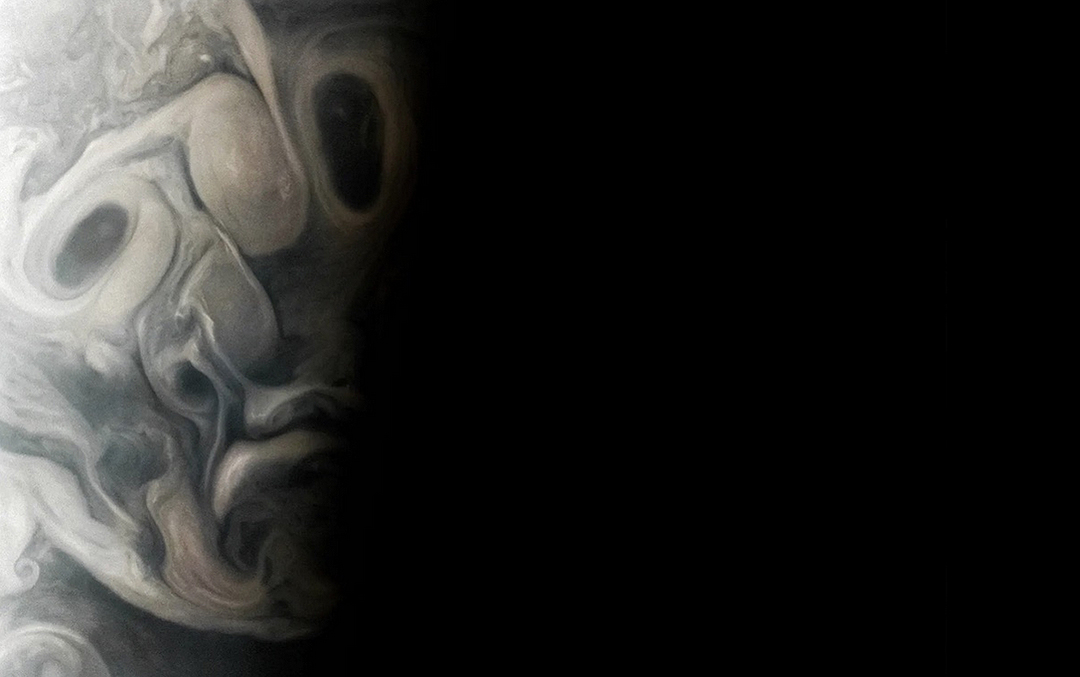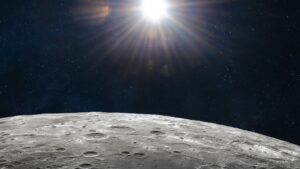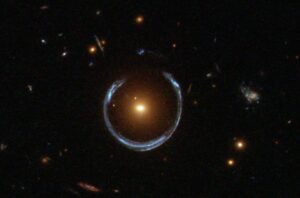A grotesque face peered up at the Juno Mission probe last month. Resembling a Pablo Picasso painting, the face emerged from Jupiter’s tumultuous atmosphere on Sept. 7. Scientist Vladimir Tarasov processed the image from the Juno Cam instrument on the probe just in time for Halloween.
The probe launched from Earth in 2011 and has been documenting the gas giant since entering its orbit in 2016, after a five-year flight.

An X post of another face on Jupiter’s surface. Photo: @RachelTortorici/Twitter
The Jet N7 region where the face appeared lies around 69 degrees north. It’s a part of the planet characterized by storms, especially polar cyclones. These can grow up to 3,000km in diameter and contain winds of up to 680kph. The atmosphere consists of multiple layers of hydrogen and helium as well as clouds of ammonia crystals. Often, these storms and their powerful jet streams wisp the ammonia clouds into unusual patterns and formations.

A lens distortion of two galaxies forming a smiley face. Photo: NASA
NASA states that the probe’s location on the dividing line between sunlight and darkness helped highlight the complex features of the Jovian surface. This low angle of sunlight helps astronomers better observe Jupiter from 587 million kilometers away. But the low-angle modeling also occasionally creates shapes, like last month’s eerie mask.
Such shapes are an example of pareidolia, the psychological phenomenon where we see recognizable shapes in random patterns. For example, people claim to see faces on pieces of toast or in clouds. Here, we see a Halloween-type ghoul on Jupiter’s tormented surface.
Similar images have appeared in space before. We’ve seen butterflies, an eye, and a horse in nebulae, for example, and other faces on the surface of Mars.






